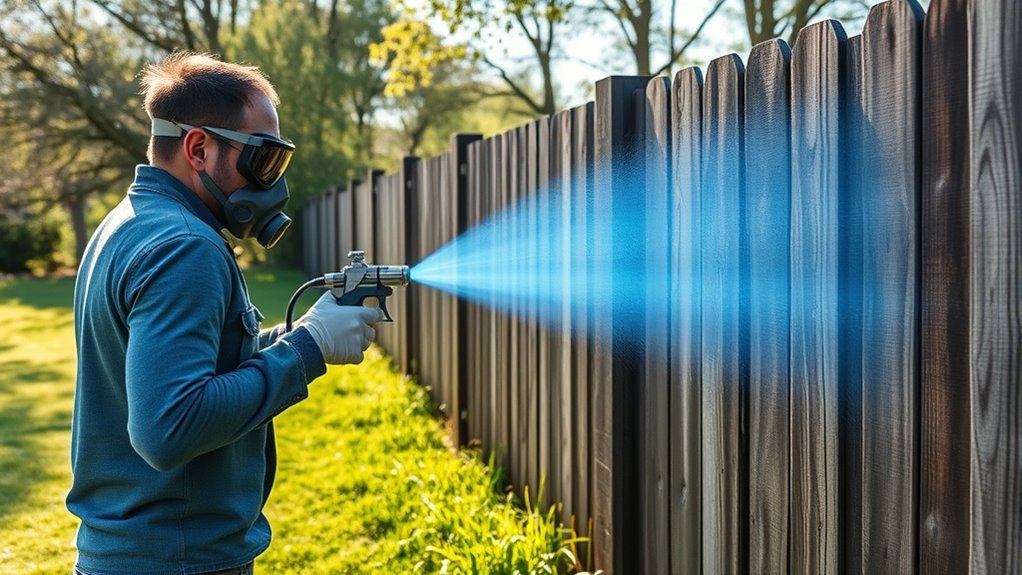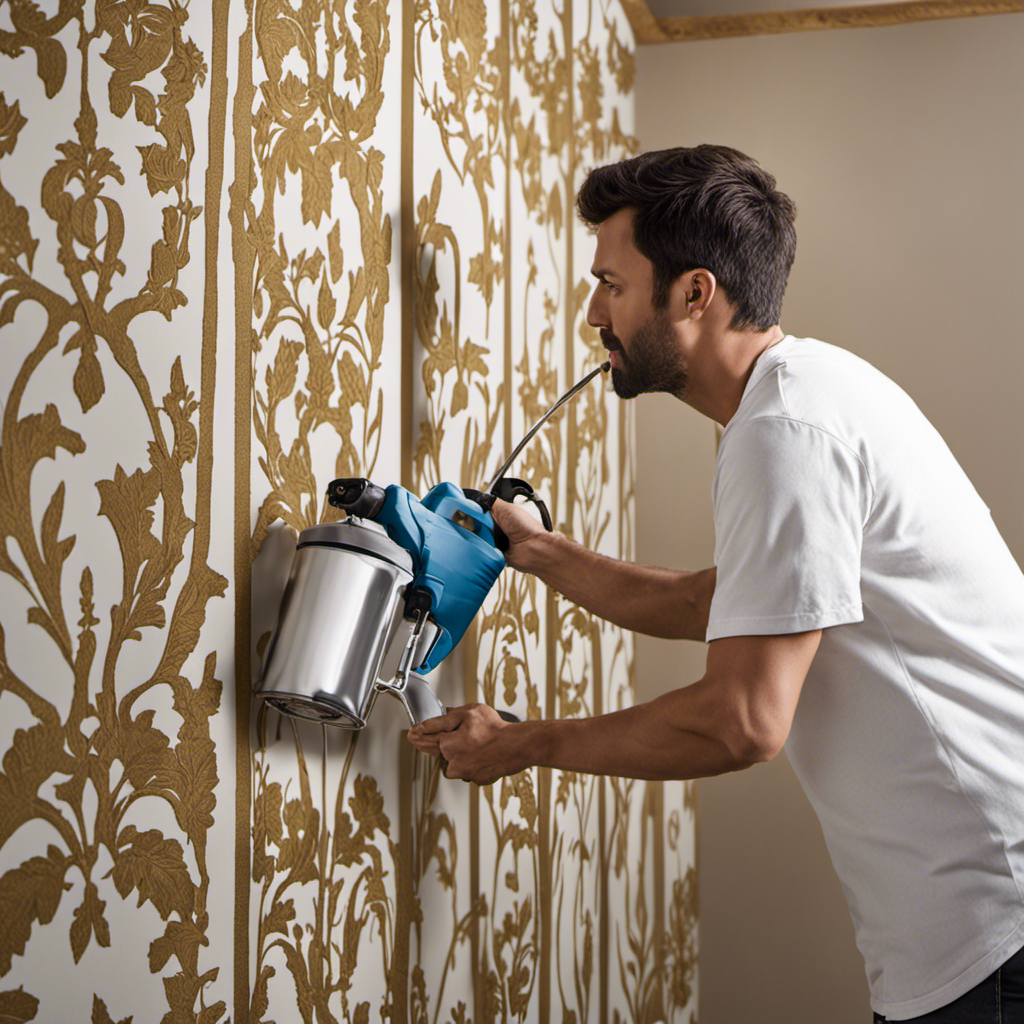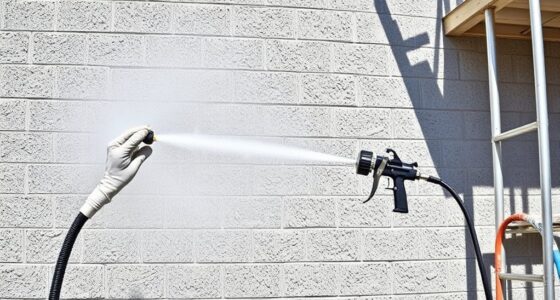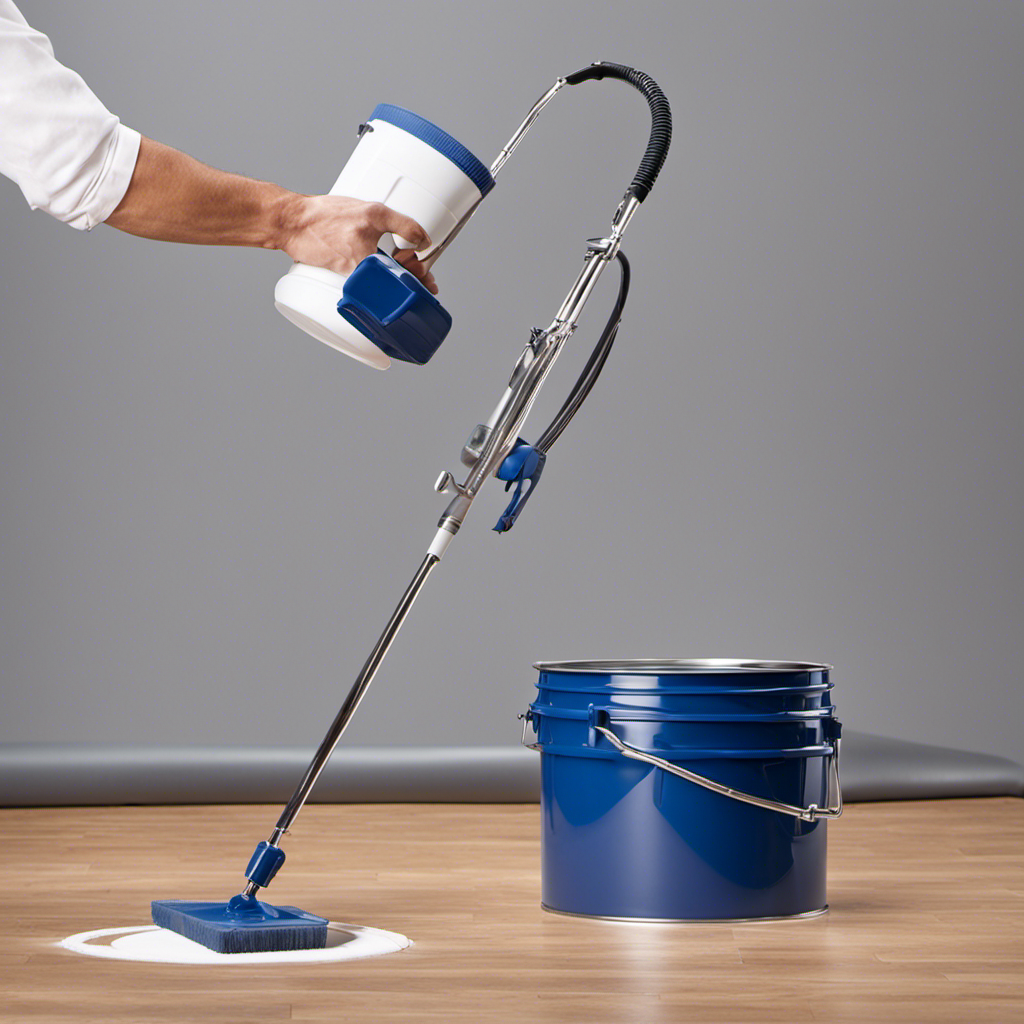To spray paint outdoors with minimal drift, choose a calm, windless time like early morning or late afternoon. Protect surrounding objects with painter’s tape, drop cloths, or barriers, and set up a makeshift shield if needed. Keep the spray at a consistent distance, and work slowly with smooth, even strokes. Monitoring weather conditions guarantees better results, and following these tips will help you master a clean, precise finish—more expert techniques await to help you perfect your project.
Key Takeaways
- Choose calm, windless times such as early mornings or late afternoons for spraying.
- Use physical barriers like plastic sheeting or cardboard to contain spray and block wind.
- Maintain a consistent distance and steady motion to prevent uneven spray and overspray.
- Work upwind of objects and sensitive areas to avoid contaminating unintended surfaces.
- Inspect and prepare your surroundings, shielding nearby objects to minimize overspray and drift.
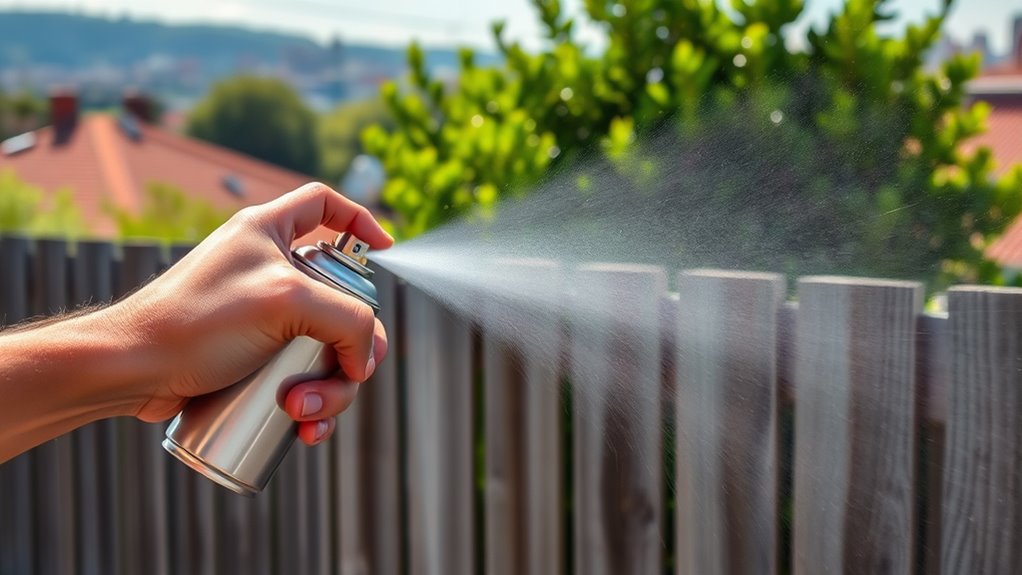
Have you ever considered how to get the best results when spray painting outdoors? Achieving a smooth, professional finish while minimizing overspray and drift requires more than just holding the spray can and moving your hand. It’s about understanding spray paint safety and choosing the right environment to guarantee your project turns out perfectly. When you think about spray paint safety, you’re protecting yourself from inhaling fumes and preventing paint from contaminating unintended areas. Always wear a mask, goggles, and gloves, and work in well-ventilated spaces or outside. But beyond your protective gear, selecting the right environment is vital. Wind, humidity, and temperature can greatly influence how your paint behaves and how much drift occurs.
On a breezy day, spray particles tend to drift far beyond your target, creating uneven coats and wasting material. To combat this, pick a calm day with little to no wind—early mornings or late afternoons often offer more stable conditions. If you have to work when the breeze is faint, consider creating a makeshift shield or windbreak using cardboard, plastic sheeting, or even natural barriers like trees or fences. These barriers help contain the spray and keep the paint directed where you want it, reducing overspray and drift.
In addition, choosing a shaded or partially shaded area can help maintain consistent paint flow. Direct sunlight and high temperatures cause the paint to dry too quickly, leading to uneven coats and increased splatter. Conversely, humid conditions can cause the paint to run or bubble. Keep an eye on the weather forecast and plan your project during mild, dry days. If you’re working in a larger outdoor space, think about setting up a temporary tent or canopy to create a controlled environment. This not only shields your work from wind but also helps control temperature and humidity levels.
Before you start, inspect your surroundings to ensure there’s nothing nearby that could be affected by overspray—like cars, plants, or other delicate surfaces. Use painter’s tape and drop cloths to protect these areas, and always work upwind from sensitive objects. Remember, spray paint safety isn’t just about your protection; it’s also about responsible spraying that minimizes environmental impact. When you choose the right environment, you’ll find it easier to control the spray pattern, reduce drips, and achieve a flawless finish. Proper preparation can also help prevent issues such as paint bubbling or inconsistent coverage, ensuring your project looks professional. By paying attention to these factors, you’ll make your outdoor spray painting projects more efficient, safer, and ultimately more successful.
Frequently Asked Questions
What Is the Best Time of Day for Outdoor Spray Painting?
You should spray paint outdoors in the early morning or late afternoon, when temperatures are cooler and wind is calmer. This helps minimize paint drying times and reduces drift. Use smooth brush techniques for touch-ups, but for larger areas, maintain steady movement to prevent overspray. Avoid painting during midday when heat and wind are strongest, as these conditions increase the risk of paint drifting and uneven drying.
How Do Weather Conditions Affect Spray Paint Drift?
Weather conditions are like a gentle breeze guiding your spray. Wind, humidity, and temperature influence paint viscosity and drift, making your spray less predictable. High wind pushes paint particles, while humidity can cause uneven drying. Use a proper spray nozzle size to control paint flow, especially in changing weather. When the air’s unstable, it’s best to postpone painting or choose a sheltered spot, ensuring your project stays precise and clean.
Can Wind Speed Be Safely Measured Before Painting?
Yes, you can safely measure wind speed before painting by using a handheld anemometer or wind meter. These tools give you real-time wind measurements, helping you decide if conditions are suitable for spray painting. Always follow safety precautions, like checking wind speed at different times and avoiding high wind conditions, to prevent paint drift and ensure a safe, quality outdoor spray job.
Are There Specific Spray Paint Types Better Suited for Outdoor Use?
When choosing spray paint for outdoor projects, opt for formulations designed for weather resistance and longevity. These paints are fortified to withstand rain, sun, and temperature swings, ensuring outdoor paint durability. Look for labels like “exterior” or “weatherproof,” as they contain special additives that act like armor for your work. Using these specific spray paint types transforms your project into a masterpiece that endures, weathering the elements like a fortress standing tall against time.
How Can I Prevent Paint From Settling on Unintended Surfaces?
You can prevent paint from settling on unintended surfaces by using ground cover to protect surrounding areas and applying masking techniques to cover areas you want to keep paint-free. Before spraying, thoroughly tape off edges and cover nearby objects with plastic or paper. Keep a steady hand, work in controlled bursts, and use a spray shield if needed. This way, you guarantee your project stays clean and precise, avoiding unwanted drips or overspray.
Conclusion
Spray painting outdoors offers freedom and flexibility, but it also demands precision to prevent drift. As you enjoy the fresh air and open space, remember that control is key—mistakes can quickly turn your vibrant project into a messy ordeal. Embrace the balance between spontaneity and caution, knowing that a steady hand and proper technique let you harness the outdoors’ beauty without letting overspray ruin your work. Ultimately, careful preparation makes all the difference between chaos and a perfect finish.
Franz came aboard the Paint Sprayer Zone team with a background in both journalism and home renovation. His articulate writing style, combined with a passion for DIY projects, makes him an invaluable asset. Franz has a knack for breaking down technical jargon into easy-to-understand content, ensuring that even the most novice of readers can grasp the complexities of paint sprayers.
